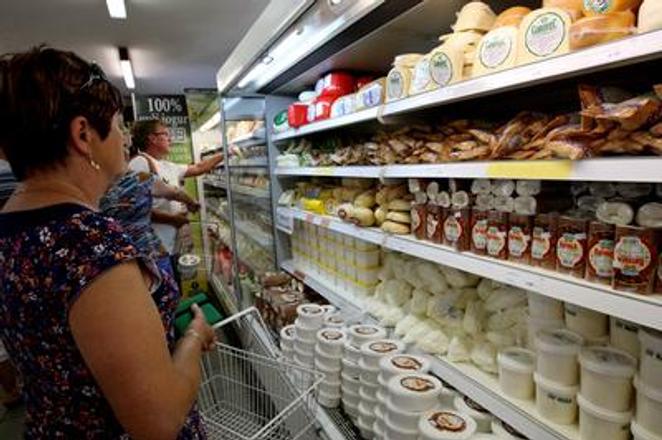The first half of 2015 has brought a small decrease in the sale share of Slovak foods, but Agriculture Minister Ľubomír Jahnátek sees the result as satisfying with respect to influx of foods from the European Union coming in the wake of the Russian food embargo as well as the cancelation of milk quotas contributing to a fall in milk prices.
“The overall share in the first half of 2015 follows the trend seen in the past two-and-a-half years,” said Jahnátek as cited by the TASR newswire. “Now it is 62.4 percent, which represents a drop of 0.8 percent compared with the end of 2014. Still, the figures sit in the neighbourhood of 62-63 percent, which is quite satisfying.”
The Agriculture Ministry calculates the share of Slovak foods based on evaluation of the sale of 22 food commodities and sectors in retail chains with the annual turnover over €10 million. These commodities make up approximately 90 percent of sales in the retail chains tracked by the state.
In terms of individual retail chains Coop Jednota sell the highest share of Slovak foods, more than 65 percent while the lowest share was registered in Lidl’s stores – 16.2 percent. Kaufland ended with a 53.9-percent share followed by Carrefour with 53.7 percent, Tesco Stores (51 percent) and Billa (47.1 percent).
Out of the monitored commodities, there are two with a share exceeding 80 percent: honey and the poultry industry. Slovak honey enjoys a share of 86.8 percent, an increase by 22.9 percent compared with the same period of 2013 when the Agriculture Ministry started to monitor the share of Slovak foods, while the poultry industry has a share of 85.8 percent, up 18.2 percent. Of the monitored commodities, vegetables grown in the medium climate band ended with the lowest share of only 28.9 percent, a drop from 43.7 percent compared with the first half of 2013.
The Union of Food Producers of Slovakia (ÚPS) as well as the Food Chamber of Slovakia (PKS) perceives the offer of Slovak foods in local stores as insufficient, putting it at only 50 percent.
“Contrary to the Agriculture Ministry we monitor the offer on shop boards and not the sale share of Slovak foods,” said Dušan Janíček, the head of ÚPS as cited by the Pravda daily.
The increase of Slovak foods on shelves of local stores and in Slovak shopping baskets is one of priorities of the cabinet while the sale share of Slovak foods stood at 51.8 percent during the first half of 2013. According to Jahnátek, the Slovak agricultural and food production is not able to supply, either in terms of quantity as well as varieties, the total assortment of all foods produced in the northern medium climatic band as a consequence of a long-term decline in food production.
“During the new programming period, which includes years 2014-2020, we have supported by increased subsidies production of vegetables, fruit as well as breeding of live stock in order we increase supply of fresh vitamins, milk and meat,” said Jahnátek as cited by the Pravda daily, adding that demand for these foods is higher as there have not occurred any scandals connected with these commodities in Slovakia.
Ľubomír Drahovský, an analyst with the Terno market research agency, warns that Slovak consumers are price sensitive.
“Th loyalty of Slovak consumers ends at the height of their purse,” Drahovský told the private TV Markíza.



 (source: Sme)
(source: Sme)